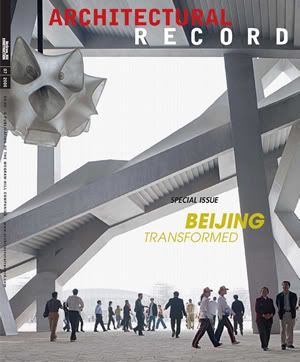Clik Me.
Tuesday, June 9, 2009
Architectural Record - June 2009
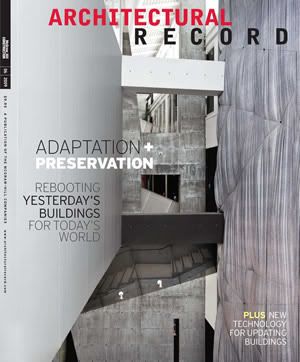
PDF | 165 pages | 44.4 Mb | English
Architectural Record - May 2009pid
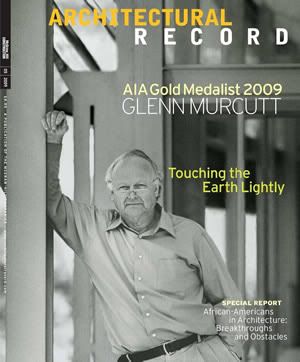
PDF | 265 pages | 67.8 Mb | English

Architectural Record - April 2009
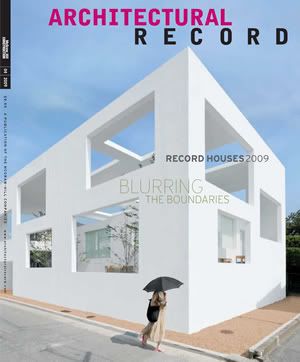
PDF | 165 pages | 57.6 Mb | English
Architectural Record - March 2009
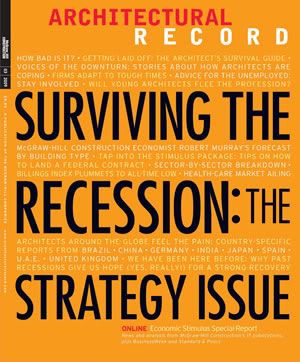
PDF | 157 pages | 53.3 Mb | English
Architectural Record - February 2009
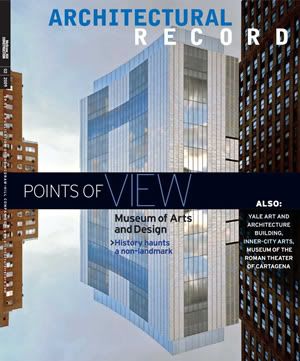
PDF | 159 pages | 55.6 Mb | English
download
Architectural Record - January 2009
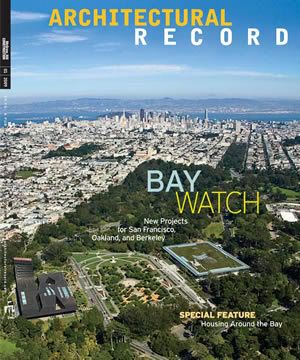
PDF | 173 pages | 61.1 Mb | English
download
Architectural Record - March 2008

PDF | 229 pages | 80.3 Mb | English
download
Architectural Record - July 2008
Architectural Record - February 2008
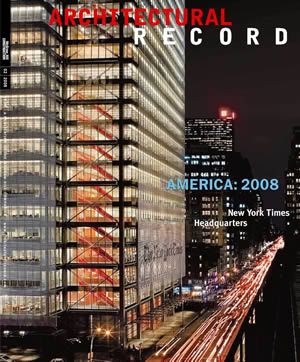
Architectural Record - February 2008
PDF | 237 pages | 65.1 Mb | English
Thursday, April 23, 2009
Great Glass Buildings

download
Today's Country Houses

download
Front To Back: A Design Agenda For Urban Housing

Contents:
Part one
Chapter 1: The urban design agenda
Martin Crookston, Llewelyn Davies
Chapter 2: The sustainability agenda
Randall Thomas, Max Fordham LLP
Chapter 3: The community agenda
Patrick Hammill, Levitt Bernstein
Chapter 4: The social agenda
Part two
Chapter 5: A design agenda
Chapter 6: Introduction to the case studies
Chapter 7: Housing at Parc de Bercy, Paris
Chapter 8: Tango Housing at Bo01, Malmo
Chapter 9: Century Court, Cheltenham
Chapter 10: Palm Housing, Coin Street, London
Chapter 11: Homes in the Calle del Carme, Barcelona
Conclusion
download
Space Grid Structures


A space frame is a three-dimensional framework for enclosing spaces in which all members are interconnected and act as a single entity. A benefit of this type of structure is that very large spaces can be covered, uninterrupted by support from the ground. John Chilton's book provides an up-to-date assessment of the use of space grid structures in buildings by reviewing methods of construction, various systems available and detailed studies of the use of space grids in modern buildings. The technical level is aimed at professional and student architects and engineers worldwide and it also serves as a useful construction manual. John Chilton is an engineer, currently teaching architectural students at Nottingham University where he is a senior lecturer. He has also undertaken considerable research in this field.
Audience
Practising and student architects and engineers; university libraries with courses in architecture, building/construction and civil structural engineering.
Contents:
1 Early development of space grids
2 Space grid geometry – thinking in three dimensions
3 Materials and systems
4 Design and construction
5 Case studies
6 Deployable, foldable and retractable space grids
7 Future developments
Appendices
Appendix 1: two-way spanning structures
Appendix 2: list of manufacturers
download
Courtyard Housing: Past, Present, Future

Courtyard housing is one of the oldest forms of domestic development spanning at least 2000 years and occurring in distinctive form in many regions of the world. Traditionally associated with the Middle East where climate and culture have given shape to a particular type of courtyard housing, other examples exist in Latin America, China and in Europe where the model has been reinterpreted. This book demonstrates, through discussions on sustainability and regional identity, and via a series of case studies, that she courtyard housing form has a future as well as a past.
download
Disclosing Horizons. Architecture, perspective and redemptive space

Product Description
Disclosing Horizons examines the influence of perspective on architecture, highlighting how critical historical changes in the representation and perception of space continue to inform the way architects design.
Since its earliest formulations, perspective was conceived as a paradigmatic articulation of space that influenced the rituals of everyday experience. Temple argues that underlying the symbolic and epistemological meanings of perspective there prevailed a deeply embedded redemptive view of the world that was deemed perfectible.
Temple explores this idea through a genealogical survey of the cultural and philosophical contexts of perspective throughout history, highlighting how these developments influenced architectural thought. This broader historical enquiry is accompanied by a series of case-studies of modern or contemporary buildings, each demonstrating a particular affinity with the accompanying historical model of perspective.
Introduction 1
1 Order and chaos, or "What to leave out?" 4
Taking measures 4
Nietzsche's perspectivism 12
Being-in-the-world 14
Alterity and infinity 20
Visible and invisible 21
What to leave out? 23
2 Number, geometry and dialectic 24
The origin of geometry 24
Pythagoras and the unutterable 27
The Meno 34
The Timaeus 38
Ad triangulum versus ad quadratum 42
Triangulating perspective 44
The School of Athens 50
Louis Kahn's Yale Art Gallery 65
3 Light, memory and colour 76
Medieval transformations 76
From memory to recorded document 78
Light metaphysics 81
Optical science 84
Grosseteste's light 86
The Bishop's Eye 88
Light and perspective 96
Light and the colour of experience 101
Steven Holl's Chapel of St Ignatius 102
4 Topography, rhetoric and the vanishing point 112
Horizontal and vertical worlds 112
Convivial settings 113
Alberti's eye 122
Nicholas Cusanus 140
The Papal Window 143
Álvaro Siza's Galician Centre for Contemporary Art 150
5 Unity in multiplicity 160
Baroque and universality 160
Distentio animi and the dome 162
Athanasius Kircher 166
Leibniz and the monad 173
J. B. Fischer von Erlach 178
Hofbibliothek 184
Peter Zumthor's St Benedict's Church 191
6 Nature and immensity 199
Transgressing boundaries 199
The picturesque and the sublime 203
Chambers and oikoumene 209
Boullée's visionary perspectives 213
Casper David Friedrich's studio 216
Rem Koolhaas' EuraLille and "l'Espace Piranesien" 221
7 Disjointed views 230
Attention and perspective 230
Attention and distraction 233
Illusion of a "mastering totalisation" 237
Magnification and distortion 241
Gustave Moreau's house 245
Eric Parry's artists' studios, London 250
Conclusion: architecture that looks back at us 262
Notes 270
Index 300
Houses Of The World

This book offers a wide range of home styles from around the globe in almost 1000 pages (999 to be exact). With more pictures than text this is definitely eye candy for anyone who loves residential architecture.
CONTENT:
Houses in the city
Houses in the suburbs
Houses by the sea
Houses in the country
Houses in the mountains
Glass Structures: Design and Construction of Self-supporting Skins

an Wurm - Glass Structures: Design and Construction of Self-supporting Skins | Birkhauser Basel | 2007 | 255 p. | PDF | RAR | 67 MB
Flat glass opens up more possibilities for the planner than virtually any other material. Because of the technological complexity of using it, however, no specific structural forms have been developed for glass supporting frameworks as they have been for wood, concrete, and steel. This book is thus the first to present a coherent guide to the planning and design of glass supporting frameworks. The focus is on the pressure-resistant, flat supporting element as a basic building block for broad supporting structures. The spatial and constructive forms of multifunctional, self-supporting glass envelopes are vividly illustrated and systematically explained. The constructions presented exhibit new aesthetic qualities, based not on the dictum of "dematerialization” but on the poetry of gleaming and transparent planes. They ring in a new chapter in the history of glass architecture.
SHORT CONTENT:
1 INTRODUCTION
2 SPANS OF GLASS
3 FLAT GLASS AS A CONSTRUCTION MATERIAL
4 DESIGN AND CONNECTIONS
5 FUNCTIONAL REQUIREMENTS
6 GLASS STRUCTURES
7 PROJECTS
8 OUTLOOK
Tuesday, February 10, 2009
Interior Color by Design
 | ||
 Author: Jonathan Poore | Language: English Rockport Publishers | ISBN: 1564960374 | September 1994 | PDF | 155 pages | 6 Aims to help designers and homeowners use colour effectively in architectural and interior design. A key concept is the interactive effects of adjacent colours and materials, both of which have a strong influence on the overall design. Download from RapidShare Download from Depositfiles |
Modern Design Materials & Technologies - 3 books

1. Arthur H Nilson, David Darwin and Charles W. Dolan - Design of Concrete Structures, 13th Edition | McGraw-Hill | August 2003 | 783 pages | PDF | RAR | 42.2 MB
2. Simone Jeska - Transparent Plastics: Design and Technology | Birkhäuser Basel | 2008 | 159 pages | PDF | RAR | 40,1 MB
3. Annette LeCuyer - ETFE: Technology and Design | Birkhäuser Basel | 2008| 160 pages | PDF | RAR | 46,5 MB
Product Description
Concrete is a stonelike material obtained by permitting a carefully proportioned mixture of cement, sand and gravel or other aggregate, and water to harden in forms of the shape and dimensions of the desired structure.
The book presents the basic mechanics of structural concrete and methods for the design of individual members for bending, shear, torsion, and axial force, and also provides detail in the various types of structural systems applications.
This 13th Edition of the classic text, Design of Concrete Structures, is completely revised using the newly released 2002 ACI Code. The text covers the behavior and design aspects of concrete and provides thoroughly updated examples and homework problems throughout.
Featuring a new chapter 10 to cover strut-and-tie models, yet retaining the two-pronged objectives of establishing a firm understanding of the behavior of reinforced concrete, and developing proficiency in the methods used in current design practic
download
2) Transparent Plastics: Design and Technology

Product Description
In recent years the construction of buildings made of plastic has increased dramatically. Originally used for temporary structures like the BMW Pavilion in Frankfurt, plastic is now employed in many permanent buildings as well, including the recent Catholic church in Radebeul by Staib/Behnisch. Prominent international avant-garde architects such as Shigeru Ban and Herzog&de Meuron frequently use transparent plastic for their structures. Transparent Plastics is a fascinating guide to building with this material whose formal qualities make it possible to achieve effects with light and color. The book is brimming with useful tips for design and building practice and includes such stimulating examples of plastic in use as the Allianz Arena in Munich by Herzog & de Meuron, the Rocket Tower in Leicester by Grimshaw & Partners, the Paper Art Museum by Shigeru Ban in Shizuoka, Japan, and the public housing development Cité Manifeste in Mulhouse by Lacaton Vassal.
download
) ETFE: Technology and Design

Product Description
ETFE foil has recently become an important material for the cladding of technologically sophisticated and innovative buildings. This material is very thin and lightweight and, when used in air-filled cushion assemblies, has enormous strength and a range of adaptive environmental attributes. ETFE cushion enclosures became known primarily through Grimshaw Architects’ Eden Project and Herzog + de Meuron’s Allianz Arena, and they are being used on the spectacular swimming stadium for the 2008 Olympic Games in Beijing, the largest ETFE building envelope in the world so far.
This book is conceived as an in-depth introduction to the characteristics of ETFE and its applications in construction. Project examples explore in detail the specific characteristics of ETFE building skins in the areas of structural behavior, light transmission, insulation, acoustics, fire engineering and environmental modification.
download
Houses Of The World

This book offers a wide range of home styles from around the globe in almost 1000 pages (999 to be exact). With more pictures than text this is definitely eye candy for anyone who loves residential architecture.
download
part1
part2
Dictionary of Landscape Architecture and Construction

download
Sunday, January 25, 2009
High Performance Concrete
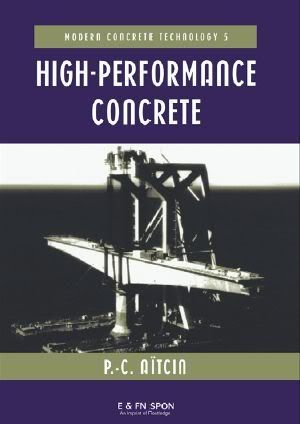

Author : Pierre Claude Aпtcin | Published by Taylor & Francis | Publication date : August 1998
Overview :
A complete review of the fast-developing topic of high performance concrete by one of the leading researchers in the field. The book covers all aspects of HSC from materials, properties and technology, to construction and testing.
This book will be valuable for all practising professionals in the field of Civil Engineering, Concrete Technologists and Construction Engineers wishing to take advantage of the remarkable properties of the material.
This book also discusses areas of further research on the topic for developing innovative and cost-effective new materials for Building and Construction Sector.
The Technology of Building Defects
 | ||
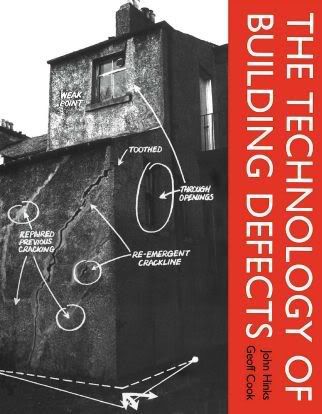 The Technology of Building Defects Information : ISBN : 041919780X | PDF Format, 373 pages | English | Original File Size : 7283 KB | Compressed File Size : 6518 KB Overview : |
Photovoltaics And Architecture
 | ||
 |
Photovoltaics And Architecture
Editors : Randall Thomas and Max Fordham | Published by Taylor & Francis | Publication date : April 2001
ISBN : 0415231825 | PDF Format, 168 pages | English | Original File Size : 8051 KB | Compressed File Size : 7698 KB
Overview :
In energy source terms, if we call the 19th century was the age of coal and the 20th of oil, the 21st will be the age of the sun.
The principal reason for this is that photovoltaic (PV) systems which produce electricity directly from solar radiation are becoming more widespread as their advantages become apparent and their costs fall. PVs are an advanced materials technology that will help us design buildings which are environmentally responsible, responsive and exciting.
This new guide provides an overview of how PVs work and how they are incorporated in the design of buildings, it gives the information that designers and, in particular, architects, need. It is for those who wish to assess the feasibility of using PVs in a specific project, for those who have already decided to use PVs and want to know how to do so and for those with the foresight to want to plan their buildings for PVs in the future.
Wednesday, January 21, 2009
The Humane Metropolis: People And Nature in the Twenty-first Century City

Open Link in New Window (easy-share)
or
Mirror Link in New Window (rapidshare)
or
Mirror Link in New Window (depositfiles)
++++++++++++++++++++++++++++++++++++++++++++++++++
6.46MB ==More eBooks http://sacrfx.blogspot.com/==
++++++++++++++++++++++++++++++++++++++++++++++++++
Groundwater Lowering in Construction: A Practical Guide

Information :
Author : P.M. Cashman and M. Preene | Published by Spon Press | Publication date : October 2002 | ISBN : 0419211101 | PDF Format, 497 pages | English | Original File Size : 7541 KB | Compressed File Size : 7200 KB
Overview :
Many engineering projects, especially major ones, entails excavations into the water-bearing soils. For all such excavations, appropriate system(s) for the management and control of the groundwater and surface water run-off, should be plannes before the start of each project. In practice, this can only be done with adequate knowledge of the ground and groundwater likely to be encounteredby reference to site investigation data.
This book outlines the practical aspects of groundwater lowering which are of assistance for the successful and economical completion of construction projects.
Tuesday, January 20, 2009
Time-Saver Standards for Architectural Design Data

Mcgraw-Hill | 7th edition (November 1, 1997) | 1072 pages | PDF + interactive | 72 MB
The standard reference in architecture and building construction, this Seventh Edition has been completely rewritten and revised with new contributions by over eighty world authorities and specialists. Now in a convenient single volume, it reflects essential changes and new knowledge in the field of architecture since the last edition 15 years ago. Part I contains new reference articles on the fundamentals of architecture and design. Part II contains design data on all aspects of architectural design and building construction, including substructure, superstructure, building shell, interiors, and services, and is formatted according to the Uniformat II classification system. First published in 1946, McGraw-Hill's Time-Saver Standards is one of the world's most widely consulted and respected references on architectural design and building construction fundamentals and data.
This Pack:
* Containing the full content of the newly revised and updated Seventh Edition of the world's premier single-volume source of standard architectural data in the English language
* Offers the complete content of the new Seventh Edition in a fully searchable Adobe Acrobat format
* Includes interactive elements
* Provides numerous examples, including international bioclimatic data, cost estimating, and lighting
* Features such enhancements as color photos, icons, and Internet links
* Extensive indexing allows for instant access to any topic
from Rapidshare (2 x 36 MB): PART1 | PART2
Landscape Ecology Principles in Landscape Architecture and Land-Use Planning


Landscape ecology has emerged in the past decade as an important and useful tool for land-use planners and landscape architects. While professionals and scholars have begun to incorporate aspects of this new field into their work, there remains a need for a summary of key principles and how they might be applied in design and planning.
This volume fills that need. It is a concise handbook that lists and illustrates key principles in the field, presenting specific examples of how the principles can be applied in a range of scales and diverse types of landscapes around the world.
Chapters cover:
* patches - size, number, and location
* edges and boundaries
* corridors and connectivity
* mosaics
* summaries of case studies from around the world
download
Understanding Architecture Through Drawing

REALLY HOT! | Советуем всем, кто желает представить свои проекты и идеи в "лучшем свете"
This second edition is fully revised and updated and includes new chapters on sustainability, history and archaeology, designing through drawing and drawing in architectural practice. The book introduces design and graphic techniques aimed to help designers increase their understanding of buildings and places through drawing. For many, the camera has replaced the sketchbook, but here the author argues that freehand drawing as a means of analyzing and understanding buildings develops visual sensitivity and awareness of design.
By combining design theory with practical lessons in drawing, Understanding Architecture Through Drawing encourages the use of the sketchbook as a creative and critical tool. The book is highly illustrated and is an essential manual on freehand drawing techniques for students of architecture, landscape architecture, town and country planning and urban design.
Friday, January 16, 2009
Precedents in Architecture

Wiley; 3 edition (November 12, 2004)
PDF | 320 pages | English | 9.5mb(rar)
Precedents in Architecture: Analytic Diagrams, Formative Ideas, and Partis/by Roger H. Clark (Author), Michael Pause (Author)
Description
A revision of the architectural classic on design analysis
Precedents in Architecture, Third Edition provides a vocabulary for architectural analysis that illuminates the works of leading architects and aids architects and designers in creating their own designs.
Thirty-one leading architects are represented in this updated Third Edition in examinations of more than 100 structures assessed through a diagrammatic technique that is applicable to any structure. This impressive collection includes sixteen new buildings and eight innovative architects distinguished by the strength, quality, and interest of their designs. Readers will find valuable guidance in analyzing architectural history as an evolutionary process by exploring the commonality of design ideas reflected in a broad range of structures by internationally renowned architects.
Both novices and seasoned professionals will find Precedents in Architecture, Third Edition a very useful tool for enriching their design vocabulary and for the ongoing assessment of buildings found in today's evolving landscape.
download
http://w15.easy-share.com/1702385747.html
or:
http://depositfiles.com/files/l5o9f2aen
Turning a Town Around: A Proactive Approach to Urban Design
 | ||
Turning a Town Around: A Proactive Approach to Urban Design ES + RS + DF | PDF | 11.10MB ++++++++++++++++++++++++++++++++++++++++++++++++++ |
architectural graphic standards

http://rapidshare.com/files/80350450/ggggggg.part3.rar
http://rapidshare.com/files/80367879/ggggggg.part4.rar
http://rapidshare.com/files/80476901/ggggggg.part5.rar
http://rapidshare.com/files/80485409/ggggggg.part6.rar
http://rapidshare.com/files/80466819/ggggggg.part7.rar
Monday, January 12, 2009
Advanced Concrete Technology 3: Processes

Advanced Concrete Technology 4: Testing & Quality
 | ||
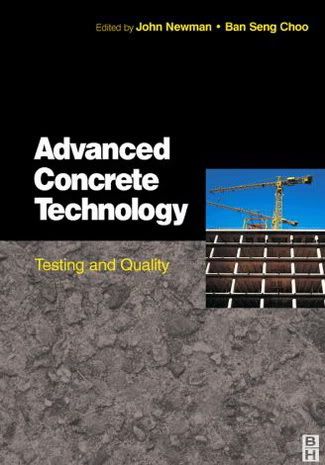 Advanced Concrete Technology 4: Testing & Quality Information : Editors : John Newman and Ban Seng Choo | Published by Butterworth-Heinemann | Publication date : May 2003 | ISBN : 0750651067 | PDF Format, 312 pages | English | Original File Size : 6150 KB | Compressed File Size : --- KB Overview : Based on the Institute of Concrete Technology's advanced course, the the 4 books of Advanced Concrete Technology series is a comprehensive educational and reference resource for the concrete materials technologist. An expert international team of authors from research, academia, and industry have come together to produce this unique reference source. Each volume deals with a different aspect of the subject: constituent materials, properties, processes and testing and quality. With worked examples, case studies and illustrations throughout, the books will be a key reference for the concrete specialist for years to come. This fourth volume deals with the testing and quality of concrete. With worked examples, case studies and illustrations throughout, the book will be a key reference for the concrete specialist for years to come. Some of the higlighted features : • Expert international authorship ensures the series is authoritative • Case studies and worked examples help the reader apply their knowledge to practice • Comprehensive coverage of the subject gives the reader all the necessary reference material |
Concrete Mix Design, Quality Control and Specification, 2nd Edition
 | ||||||
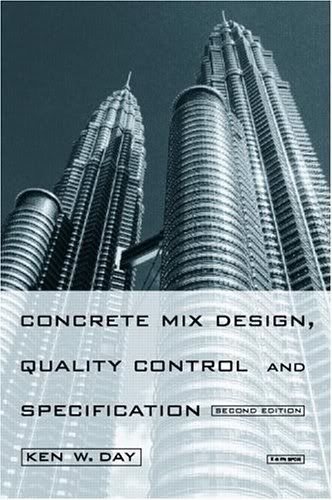
|
The Design of Pre-Stressed Concrete Bridges
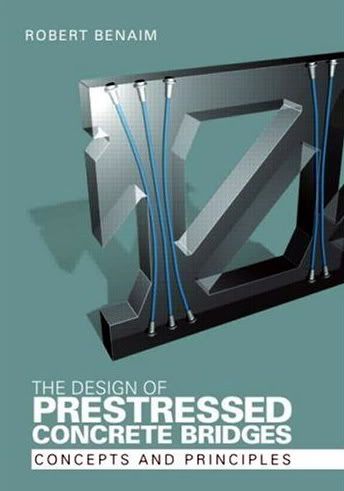
The Design of Pre-Stressed Concrete Bridges
Information :
Author : Robert Benaim | Published by Taylor & Francis | Publication date : December 2007 | ISBN : 0415235995 | PDF Format, 602 pages | English | Original File Size : 15004 KB | Compressed File Size : 13930 KB
Overview :
Examining the fundamental differences between design and analysis, the author explores the close relationship between aesthetic and technical creativity and the importance of the intuitive, more imaginative qualities of design that should be employed by every designer when designing a structure. Aiding designers of concrete bridges in developing an intuitive understanding of structural action, this book thereby encourages innovation and the development of engineering architecture.
Simple, relevant calculation techniques that should precede any detailed analysis are summarized. Construction methods used to build concrete bridge decks and substructures are detailed and direct guidance on the choice and the sizing of different types of concrete bridge deck is given.
In addition guidance is provided on solving recurring difficult problems of detailed design and realistic examples of the design process are provided. This book enables concrete bridge designers to broaden their scope in design and provides an analysis of the necessary calculations and methods


